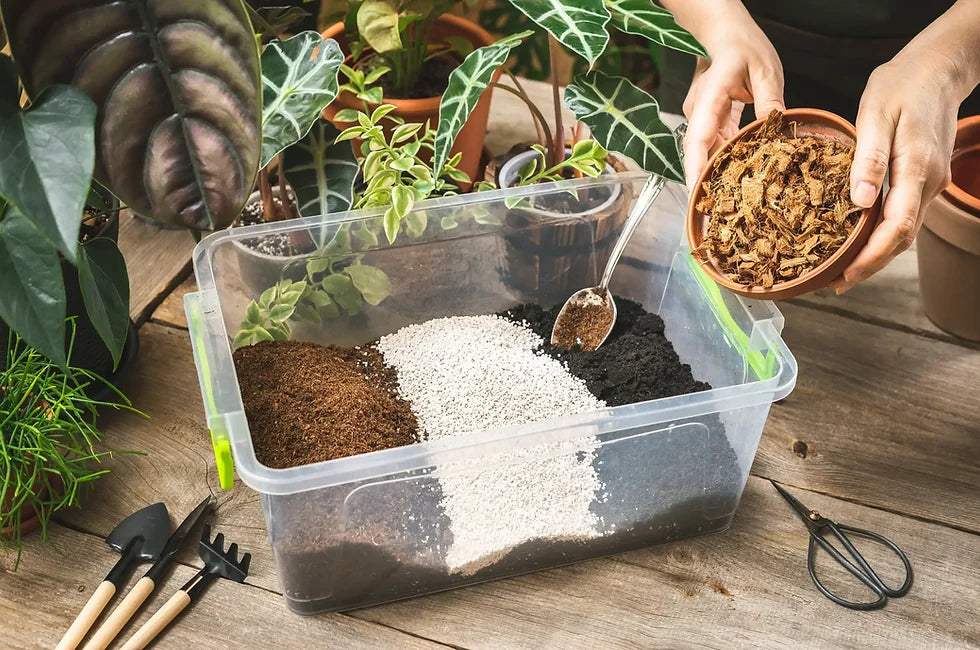
Substrate vs. Regular Soil: Which One is Better for Houseplants?
Share
Substrate vs. Regular Soil: Which One is Better for Houseplants?
When it comes to caring for indoor plants, choosing the right growing medium is essential. Many plant owners wonder whether they should use a specialized substrate or stick with regular soil. The truth is, the type of soil you choose can greatly impact the health, growth, and longevity of your houseplants. In this article, we’ll compare substrates vs. regular soil, highlighting their key differences and helping you decide which one is the best option for your plants.
What Is Regular Soil?
Regular soil, often referred to as garden soil or potting soil, is a general-purpose growing medium that contains a mix of organic matter, minerals, and nutrients. It is commonly used for outdoor gardening and can be purchased in bags from garden centers or collected directly from the ground.
💡 Pros of Regular Soil:
✅ Contains natural nutrients for plant growth.
✅ Readily available and often inexpensive.
✅ Suitable for outdoor gardening.
⚠️ Cons of Regular Soil for Houseplants:
❌ Can retain too much moisture, leading to root rot.
❌ Often too dense, preventing proper aeration.
❌ May contain pests, fungi, or bacteria that can harm indoor plants.
Regular soil is great for outdoor gardens but may not provide the right drainage and aeration needed for houseplants, which thrive in more controlled conditions.
What Is a Substrate?
A substrate is a specially designed soil alternative that provides optimal drainage, aeration, and nutrient balance for specific types of plants. Unlike regular soil, a good substrate is a carefully crafted mix of organic and inorganic materials, such as coconut coir, perlite, bark, and charcoal.
💡 Pros of Using a Substrate for Houseplants:
✅ Designed to provide excellent drainage and prevent overwatering.
✅ Promotes healthy root growth by improving aeration.
✅ Contains a balanced nutrient composition tailored for specific plant needs.
✅ Reduces the risk of pests, mold, and fungal infections.
✅ Ideal for indoor plants like Monsteras, Philodendrons, Alocasias, and Hoyas.
⚠️ Cons of Using a Substrate:
❌ May need additional fertilization over time.
❌ Slightly more expensive than regular soil.
❌ Requires plant-specific selection (not all substrates work for all plants).
At VitaPlant USA, we specialize in high-quality substrates designed for the specific needs of indoor plants, ensuring they get the right balance of moisture and oxygen.
Key Differences: Substrate vs. Regular Soil
| Feature | Regular Soil | Specialized Substrate |
|---|---|---|
| Drainage | Poor, retains water | Excellent, prevents overwatering |
| Aeration | Compact, limited airflow | Loose, promotes oxygen flow |
| Nutrient Balance | Contains nutrients but may be unbalanced | Carefully formulated for plant needs |
| Pest & Disease Risk | High (may contain fungi, bacteria, pests) | Low (sterile and pest-resistant) |
| Best for | Outdoor gardens | Indoor plants like Monstera, Philodendron, Alocasia |
Which One Is Better for Houseplants?
For indoor plants, a substrate is the better choice because it provides the right moisture control, aeration, and nutrients that houseplants need to thrive. Regular soil may work for some hardy plants, but it often retains too much water and lacks the proper structure for delicate indoor species.
If you want to ensure the best growth, stronger roots, and healthier plants, choosing a premium substrate like those from VitaPlant USA will give your houseplants the best chance to flourish.
Choose the Best for Your Plants
While regular soil works well for outdoor plants, it may not provide the right conditions for houseplants. A specialized substrate is designed to offer the best balance of drainage, aeration, and nutrients, ensuring that indoor plants stay healthy and vibrant.
🌿 Looking for the best substrate for your Monstera, Philodendron, Alocasia, or Hoya? Shop VitaPlant USA and give your plants the soil mix they deserve!